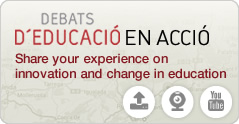- Català
- Español
- English
You are here
Is privatization the solution? Challenges and tensions in education funding
About the speaker
Henry Levin
William Heard Kilpatrick Professor of Economics and Education at Teachers College, Columbia University
Key ideas
There are a number of forms of privatization of schools, depending on who owns the centre and where the funding comes from:
- Privately owned schools with private funding.
- Publicly owned schools with private management.
- Privately owned schools with public funding.
Education is affected by the tensions coming from public and private objectives, and the need to find a balance between the two sides.
Public function. Dissemination of social values, language, understanding of the social reality of each place.
Private function. The private benefit and well-being of the student.
Milton Friedman is one of the theoreticians trying to establish how to resolve these tensions between the public and private objectives.
- In terms of funding, governments have to cover the cost of education for the social benefits it brings (social and democratic values) and because societies with better levels of education are more productive economically.
- Who manages the schools? Free market competition leads to greatest efficiency in education. The state shouldn’t have a monopoly on education and families should be free to choose the school they want.
- The best model to combine both of the above points is the school voucher. The government gives families a voucher to cover the cost of education and the families invest in the school they want to. The schools that offer the most attractive programmes attract students. The schools that can’t attract students disappear.
Some countries have voucher-based education models, including Chile, Netherlands, Sweden and some US states.
There are three elements of privatization of education that affect the educational model:
- Funding. The value of the voucher is key. If the voucher is not worth enough, schools will not compete to get them. If families are allowed to top up the value, levels of schools can appear corresponding to families’ incomes. A model with vouchers compensating for students at risk of exclusion can also be established.
- Regulation. How do schools select students if there are more applicants than places? If schools make the selection, this may have implications; they will select less problematic students, leading to stratification. Who sets the curriculum? Should it be set by the state? Who can teach? Who sets the assessment tests?
- Services. A series of services have to be guaranteed in terms of being able to access the schools that people want to go to: transport and precise information on the centre.
What elements need to be assessed to determine the effectiveness of privatization? A balance has to be found between these four values:
- The right to choose the centre.
- Productivity and resource efficiency – not only in terms of acquiring knowledge, but also in terms of acquiring values and attitudes. We have to go beyond just the numbers from tests like PISA.
- Equality.
- Social cohesion.Encouraging students to support established social values.
Results from some of these voucher-based privatization systems include:
- Increased desire to be able to freely choose a school.
- Freedom of choice brings satisfaction to families, but contributes little in terms of educational results.
- Increased stratification and segregation.
- There is little analysed evidence as to whether they lead to greater social cohesion.
The context is important when establishing privatization of schools. In the words of the speaker, the school voucher could be useful in Asian countries with high levels of corruption in the education system, as it would improve the system for choosing a school. However, democratic countries like Sweden and Netherlands have seen how vouchers have not improved levels of education or social cohesion.
This Debate on Education is sponsored by Obra Social "la Caixa" and its Internationalization at Home Plan.
![]()
Discover
other ideas
-

Creating schools that prepare for the future
Richard Gerver
2013 -

Collaborate, innovate and lead. The future of the...
John MacBeath
2013 -

The role of families in improving schools and the...
Annie Kidder
2013






 The texts published on this website are, unless otherwise indicated, covered by the Creative Commons Spain Attribution - Non Commercial - No Derivs 3.0 licence. You may copy, distribute and transmit the work, provided you attribute it (authorship, journal name, publisher) in the manner specified by the author(s) or licensor(s). You may not use the material for commercial purposes. You may not transmit any derivative work from this material. The full text of the licence can be consulted here:
The texts published on this website are, unless otherwise indicated, covered by the Creative Commons Spain Attribution - Non Commercial - No Derivs 3.0 licence. You may copy, distribute and transmit the work, provided you attribute it (authorship, journal name, publisher) in the manner specified by the author(s) or licensor(s). You may not use the material for commercial purposes. You may not transmit any derivative work from this material. The full text of the licence can be consulted here: